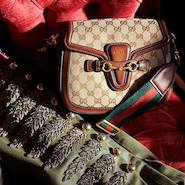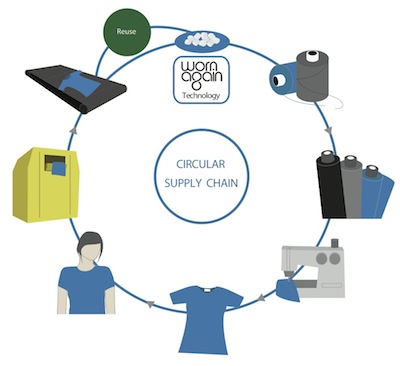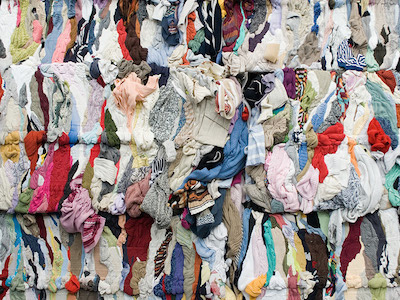 Half of Gucci's leather handbags are produced with more sustainable tanning
Half of Gucci's leather handbags are produced with more sustainable tanning
NEW YORK - Rather than being a constraint, sustainability is an opportunity for companies to create value for their stakeholders, said the CEO of Kering at Parsons The New School for Design’s “Kering Talk: Why Sustainable Fashion is Smart Business?” on April 2.
Instead of looking at ecologically friendly efforts as a marketing strategy or a selling point, Kering thinks of it as a responsibility. This extends to sharing technology and processes found, such as a new tanning process, with others in the industry, including competitors.
“The vision we have is very optimistic, as we see that it’s absolutely not a matter of constraint, or following some rules obliged to, so it’s really opportunities for us,” said François-Henri Pinault, CEO and chairman of Kering.
“I think people need to be convinced to share this vision,” he said. “We are an important corporation, but alone we won’t change anything, so it’s also a matter of teamwork, working with the public sphere, with the NGOs and other corporations.
“If we want to move forward and to achieve something, it’s also a lot of sharing. In that field of sustainability, when you find things and when you do things, you have to have in mind that you need to share what you do, what you achieve.”
Working together
Mr. Pinault became CEO of Kering in 2005. At that time, he visited all of the brands under the conglomerate umbrella to talk about sustainability.
Later, the group set out to transform its operations, placing 15 experts from NGOs within the company, and creating a dedicated position at each brand dedicated to sustainability.
Kering knows that some of the places it can make the most impact is with cotton farming and cattle ranching. Within its supply chain, it has created a code of ethics that its producers need to adhere to. If they are unable to work sustainably, Kering will move on to someone who will.
Panel, from left: moderator Simon Collins, François-Henri Pinault, Linda Greer and Timo Rissanen
Sustainable fabrics have come a long way from where they were years ago, and now designers have more choices at their disposal.
Knowing that designers do not have a lot of time to experiment with textiles, Kering created a central Materials Innovation Lab, which develops new fabric processes and sources new textiles into a library accessible for all of its brands.
An example of innovation, about half of Gucci’s leather goods are now made with a new tanning process, which reduces the heavy metal pollutants involved in the process and lowers the amount of water and energy used by 20 to 30 percent, something Kering was able to do financially because it is a luxury company.
“It’s more costly, for sure, so it’s not available for industries that are less rich than us, but as we grew in volume, I am sure we will make this technology available for not only luxury, but all the segments of the industry, and we will share those methodology with anyone who wants to have access on a free basis,” Mr. Pinault said.
“If you find a solution like this, and you’re making it a competitive advantage, you miss completely the point,” he said.
“Luxury has this responsibility to make some research, because we can do that.”
The conglomerate is also doing its part to promote sustainability by partnering with a new technology company to develop innovative strategies for recycling fabric.
Textile waste is a significant problem in the fashion industry, and the pioneering start-up Worn Again is seeking to solve it once and for good by creating chemical recycling technology that will allow fabric to be repurposed (see story).
Worn Again infographic
Mr. Pinault said that this partnership may have a large impact on Kering’s impact within sustainability, since 65 million tons of fiber are being used per year, with a projection of 90 million tons by 2020.
When initiated in certain aspects of operations, sustainability can save companies money. Kering has lowered costs with in-store changes, such as using sustainable material and electricity.
"It’s not obvious, but sustainability, sometimes it’s cost-saving, if you integrate that at a really early stage of the process," Mr. Pinault said. "If you integrate the constraint of sustainability in the middle of the process, it’s extra cost all across.
"This is why many companies consider sustainability being a constraint they have to respect, but just a constraint, something that is compulsory and nothing more," he said. "It’s because they don’t integrate that from the very early stage."
Saint Laurent stores now use LED lighting, recyclable cardboard and optimized HVAC system
Sustainable efforts need to keep retail and business practicality in mind, balancing that with the needs of the environment.
Puma created reusable, sustainable bags instead of the typical cardboard boxes for its sneakers. However, these were not a hit with retailers, since they could not stack the shoes anymore, and an alternative had to be found.
In May, Kering is performing an environmental profit and loss analysis in May to be transparent with stakeholders on the impact it is making.
The next generation of designers is going to have a tremendous impact on the industry, since they are starting to question and learn about sustainability from the start.
Parsons’ Timo Rissanen, who is program director, AAS fashion, said during the panel that students are required to take a class freshman year on sustainability. He sees designers’ inclination to “creative problem solving” as an opportunity within the industry.
As part of Kering's partnership with Parsons on a student competition (see story), the winning collegiate designers will get to visit the group's Materials Innovation Lab.
Stella McCartney uses sustainable fabric
Changing attitude
Linda Greer, senior scientist for NRDC’s Clean by Design, said that while consumers are aware of sustainability, they might not go out of their way to find goods that are eco-friendly, but they will rebuke brands that receive bad publicity.
While it may seem counterintuitive, Mr. Rissanen said getting consumers interested in sustainability may have to revolve more around what they don’t need to buy rather than what they must purchase. However, Mr. Pinault was skeptical that getting consumers to change their consumption patterns would work, and instead focuses on making the products they are buying more environmentally friendly.
Kering does not think of sustainability as a differentiator at point of purchase, but rather an intrinsic way of life, using the example of its apparel brand Stella McCartney.
British fashion designer Stella McCartney approaches her business with an innate sustainability mindset, which she explained to the audience May 12 at the FT Business of Luxury Summit.
From using wind power for a store to foregoing leather and PVC, Ms. McCartney considers environmentally friendly so automatically that she forgets she is doing it. This has become part of her namesake label’s story, even if it is one that it does not overtly promote (see story).
Mr. Pinault said that the consumer does not see evidence of Stella McCartney’s sustainability in-store, since she is not doing it to sell more clothing. Exceptions, such as a label that says a jacket is faux fur, are done not for marketing, but to put pressure on other companies to follow her lead, however her label is very profitable.
“I think people as individual citizens are very aware of sustainability, but if you do that to sell one more handbag, you better stop,” Mr. Pinault said.
“I don’t want to sell one more handbag because of that,” he said. “Make it because you’re convinced that’s the way things should be done.”
Final Take
Sarah Jones, staff reporter on Luxury Daily, New York




